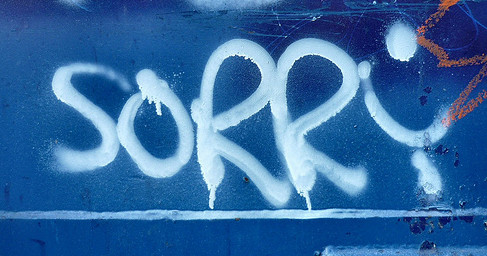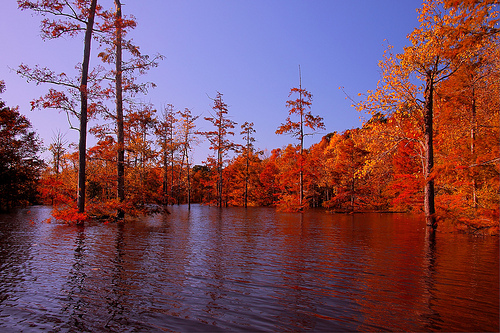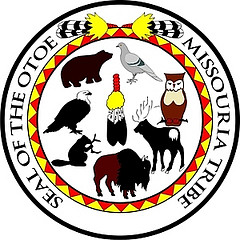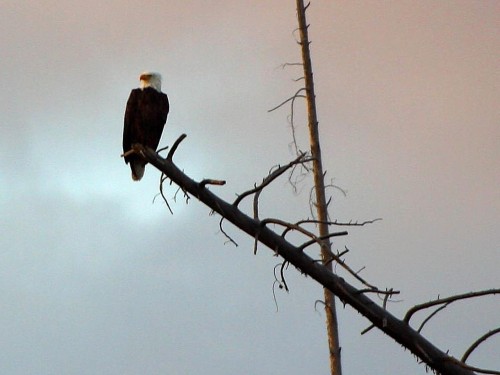This coming Friday and Saturday will mark the most sacred of yearly Jewish holidays, Yom Kippur. As a child, I remember my mother explaining that Yom Kippur was “a day to atone for our sins.” Having grown up only culturally Jewish, I stared back blankly. A what? Sin? She eventually clarified by saying, “It is a day to say you’re sorry.” That I understood.

Courtesy of Flickr’s runran
In a recent Huffington Post article, lawyer Diane Danois contemplates the words “I am sorry” in relation to her Jewish faith. Using a lyric written by Sir Elton John, she asks why, “sorry seems to be the hardest word.” But then she offers her own prescription for an effective apology:
(1) Recognition. There should be an acknowledgement of the wrongdoing.
(2) Selflessness. It should be more than an act of words, and given from the heart and soul;
(3) Specificity. The receiver should understand the nature and sincerity of the apology; and
(4) Act. It should be accompanied with an action, such as a modified behavior or restitution.
She adds,
“I am sorry” alters the way we interact with someone. It diffuses tension and makes available opportunity for better communication. “I am sorry” acknowledges a hurt, regardless of fault or intent. Given genuinely and received graciously, “I am sorry” is the pathway for new beginnings.
Yom Kippur is a day set aside to do just that – forge new pathways through apology. Applying Danois’ formula to a Pagan theology, a true apology could be considered transformative magick. Words and actions lead to change. However, Pagans generally may not have a “day of atonement” or a single specific religious holiday set aside for apologizing.

Upper Ouachita National Wildlife Refuge, LA
Photo by Scott Whitlock, USFWS
Despite that fact, there are a multitude of opportunities throughout the year to spiritually or mundanely perform this magickal apologetic act to self, to others and to Deities. But what about to the Earth? Do we ever stop to apologize to the land?
Last week, Shauna Aura Knight made a rather direct statement on her blog Pagan Activist:
If you call yourself Earth-centered…or if you turn and face the North in ritual and invoke or honor the Earth, and you are littering like this, if you aren’t sorting your trash and recycling, if you are drinking bottled water and not making any attempt to begin to live more sustainably, you have no business standing in ritual and calling Earth, honoring the Earth…
Without a doubt, humanity’s unsustainable processes have created irrevocable damage to the Earth’s natural ecosystems. Should we apologize for these transgressions? If so, how do we make restitution? Is it even possible to sincerely apologize to the Earth, to fix our errant ways and thereby transform our future?
The answer to that question is in the story of the Bald Eagle, the messenger of the Gods.
![By Tony Hisgett from Birmingham UK [via Wikimedia Commons]](https://wildhunt.org/wp-content/uploads/2013/09/Bald_Eagle_Head_2_6021915997-500x446.jpg)
By Tony Hisgett from Birmingham UK [via Wikimedia Commons]
In 1940, the U.S. Government created the Bald Eagle Protection Act to legally protect the bird from hunters. Despite this protection, the Bald Eagle population continued to decline at a rapid pace. In 1963, there were only an estimated 417 breeding pairs left in the continental U.S. Because the Eagle is at the top of the food chain, only humans could be the cause.

Rachel Carson, Author “Silent Spring”
Precipitated by the landmark book Silent Spring by Rachael Carson (1962), it was discovered that agricultural pesticides like DDT and Kepone were the main culprits of the population decline. Such chemicals interrupt the bird’s calcium metabolism, rendering a female virtually infertile. Fortunately, by the 1960s, the ecology movement had gained enough momentum to garner the attention of the U.S. Federal Government. In 1970 Richard Nixon formed the Environmental Protection Agency (EPA) and then in 1973, he signed the Endangered Species Act. These two governmental provisions allowed for the strict legal protection and conservation of many threatened plants and animals. The Bald Eagle was on that original list.
These collective and aggressive attempt to bring this magnificent bird back from near extinction worked. In 1972, the chemical DDT was banned and active conservation measures were put into place. By 2007 the Bald Eagle population had rebounded to such a degree that it was removed from the endangered species list. Today there are over 10,000 or more breeding pairs and the numbers are only expected to grow. In a recent NPR report called “Bad Eagles are Back in a Big Way,” conservation biologist Bryan Watts says:
The greatest thing about that [is] that it was our society that brought them back… Bald eagles have become our nation’s best conservation success story… Now’s the time to see the birds in action, and discover what they’re really like.
Could the actions taken to save the Bald Eagle be considered a human apology to the Earth; a recognition of a wrong-doing resulting in acts that will eventually bring back a natural equilibrium?
 Unfortunately a secondary problem evolved from these well-meaning conservation efforts. Since 1973 Native American groups have had to fight for their rights to use Eagle parts in religious ceremonies. In many traditions, the bird is sacred and its parts are used in ritual. Under the 1940s act, exceptions were made for “Indian Religious Use.” However, these exceptions were null and void under the ESA. As noted by Antonio M. DeMeo for the Animal Legal and Historical Center,
Unfortunately a secondary problem evolved from these well-meaning conservation efforts. Since 1973 Native American groups have had to fight for their rights to use Eagle parts in religious ceremonies. In many traditions, the bird is sacred and its parts are used in ritual. Under the 1940s act, exceptions were made for “Indian Religious Use.” However, these exceptions were null and void under the ESA. As noted by Antonio M. DeMeo for the Animal Legal and Historical Center,
While these statutes provide necessary protection for a magnificent bird, they also infringe on Native Americans’ rights to religious freedom.
Religious Freedom vs. Ecological Protection? The apologetic act is never easy, is it? Retribution means sacrifice and difficult choices. Perhaps now that the Eagle population has rebounded some restraints will be lifted to allow for the limited use of Eagle parts for Native American religious ritual.
Thus far the work done to save the Eagle is uplifting at a time when so many other environmental and social projects seem to be struggling. Could the Eagle’s success story be a message that we can atone for our transgressions and make those retributions? Shauna Aura Knight writes:
It’s hard, and my greatest fear is that it’s not going to have enough of an impact. But I’m going to try my best, because, I am Earth-Centered. I value the Earth and my relationship to it. I consider it a contract, a sacred trust. It’s my job to live in better harmony, to reduce my use of resources, and to help others do the same.

I remember the first time that I saw the Bald Eagle. It was in the pacific North West while sea kayaking. The guide said, “Just look for a coke bottle with a golf ball on top.” And,there they were – giant birds at the tops of the tallest trees watching us from above; the messengers of the Gods.
If saving the Eagle was an apology, we did this as a society, as noted by Watts. Through recognition, selflessness, specificity and action, we “righted a wrong.” As such, we transformed our relationship with the bird, its place within our shared land and in our collective future. Our children will be able to see the Eagle grace the skies. Practitioners of Indigenous traditions may be able to once again use the bird for religious rites free from legal entanglements.
If we did it once, we can do it again. In this way, the Bald Eagle is indeed a messenger. Our national bird is proof that we can make a difference. We can say sorry and be transformed.
The Wild Hunt is not responsible for links to external content.
To join a conversation on this post:
Visit our The Wild Hunt subreddit! Point your favorite browser to https://www.reddit.com/r/The_Wild_Hunt_News/, then click “JOIN”. Make sure to click the bell, too, to be notified of new articles posted to our subreddit.

Living in the UK, and having never travelled west of this island, I have never seen a wild bald eagle.
I have, however, seen a free flying bald eagle, as part of a raptor display. Extremely impressive.
I can see why the bird was chosen as a national emblem.
But how many of us have seen a real Bald Eagle flying free?
Happily, I have – there’s one or two which I often see around my neighborhood (along with Roseate Spoonbills.) I’ve lived here for twenty-five+ years, but it wasn’t until about 8 years ago that I started seeing these birds regularly in the wild.
Ben Franklin was right. We should have picked the turkey as the national symbol.
Perhaps . However, a 1940 Turkey Protection Act would have put a very damper on holiday dining. In fact, the entire mythology built around Thanksgiving would have to be drastically changed. Quite the concept!
I just saw a Bald Eagle a couple of weeks ago. They are very common in my area. I spot them from time to time flying over the river as I am driving across the bridge. They are very beautiful and majestic birds.